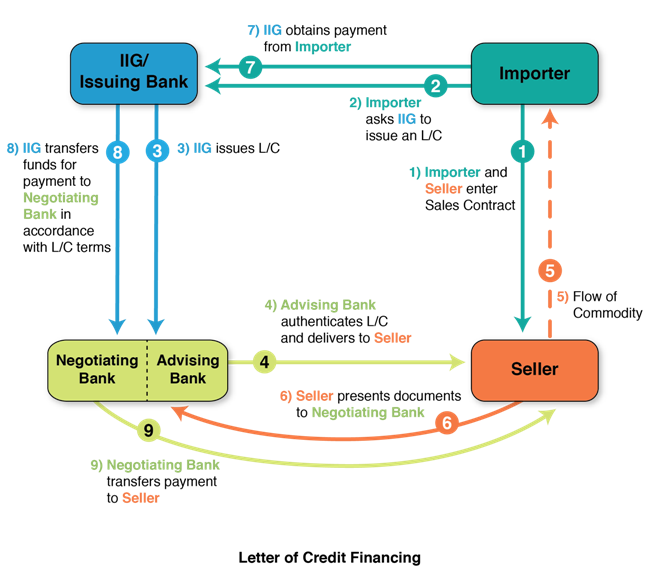Standby Letter of Credit

A letter of credit is a document typically from a bank (Issuing Bank), assuring that a seller (Beneficiary) will receive payment up to the amount of the letter of credit, as long as certain documentary delivery conditions have been met. In the event that the buyer (Applicant) is unable to make payment on the purchase, the Beneficiary may make a demand for payment on the bank. The bank will examine the Beneficiary’s demand and if it complies with the terms of the letter of credit, will honour the demand.
The letter of credit states what documents the Beneficiary must present, what information they must contain, and the place and date it expires. Beneficiaries who sell goods and utilize a letter of credit as the method of payment have the assurance of the issuing bank that if they present the documents stated in the letter of credit, the issuing bank will honour their demand for payment.
They are often used in international transactions to ensure that payment will be received where the buyer and seller may not know each other and are operating in different countries. In this case the seller is exposed to a number of risks such as credit risk, and legal risk caused by the distance, differing laws and difficulty in knowing each party personally. A letter of credit provides the seller with a guarantee that they will get paid as long as certain documentary delivery conditions have been met. For this reason the use of letters of credit has become a very important aspect of international trade.
The bank that writes the letter of credit will act on behalf of the buyer and make sure that all documentary conditions have been met before making the payment to the seller. Most letters of credit are governed by rules promulgated by the International Chamber of Commerce known as Uniform Customs and Practice for Documentary Credits. The current version, UCP600, became effective July 1, 2007. Letters of credit are typically used by importing and exporting companies particularly for large purchases and will often negate the need by the buyer to pay a deposit before delivery is made.
They are also used in land development to ensure that approved public facilities (streets, sidewalks, storm water ponds, etc.) will be built. The parties to a letter of credit are the supplier, usually called the “beneficiary”, “the issuing bank”, of whom the buyer is a client, and sometimes an advising bank, of whom the beneficiary is a client. Almost all letters of credit are irrevocable, i.e., cannot be amended or cancelled without mutual consent of all parties.
Coyright © 2021 CORAL INVESTMENTS LIMITED. All rights reserved.

